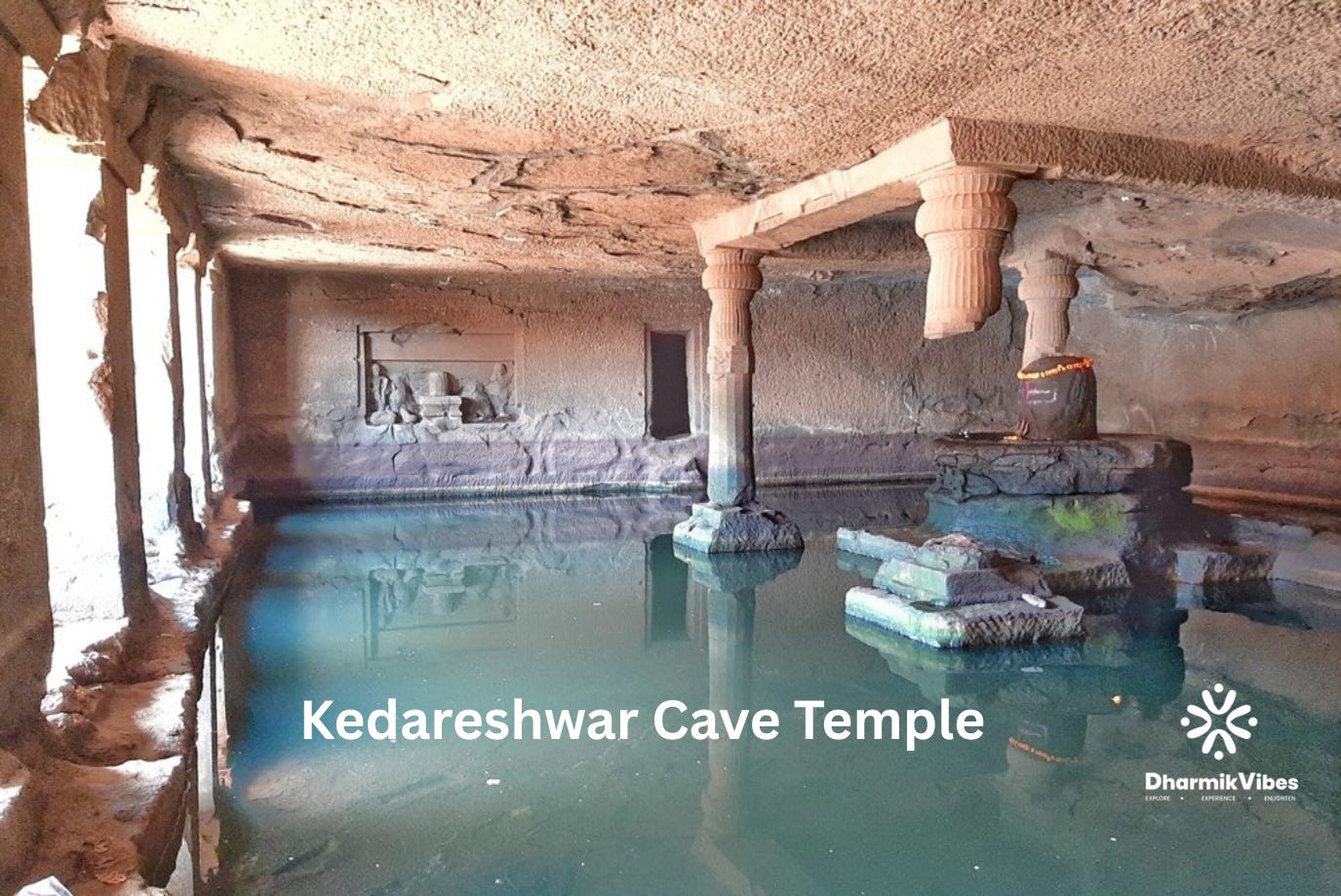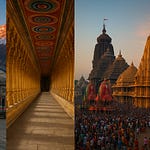"Om Namah Shivaya 🙏🔱"
Nestled in the highlands of Maharashtra’s Ahmednagar district, at an astonishing altitude of 4671 feet, lies the Kedareshwar Cave Temple — a sacred, ancient cave shrine dedicated to Lord Shiva, surrounded by mysticism, celestial belief, and raw natural beauty. It is not just a place of pilgrimage, but a symbol of cosmic rhythm and eternal truths deeply rooted in Hindu cosmology.
📍 Location & Altitude
Location: Harishchandragad plateau, Ahmednagar district, Maharashtra
Altitude: 4671 feet above sea level
Access: Situated in a rocky cave behind the famed Harishchandreshwar Temple, within a high-altitude terrain ideal for trekking and spiritual adventure.
📜 Foundation and Timeline
Era: Believed to be thousands of years old, dating back to the early medieval period, possibly earlier.
Architectural Influence: The temple is carved in a cave in the Hoysala-Yadava architectural tradition.
Significance in Time: It stands as an ancient Shaiva cave shrine, untouched by time, history, and invasions, shrouded in thick mists and secrecy.
The origin of the cave temple is unknown, adding to its divine mystery, but it is speculated that the temple predates the 9th century CE and may have been used by sages for meditation.
🕉️ Mythology & Symbolism: The Four Pillars of Time
One of the most captivating aspects of this temple is its association with Hindu cosmology:
Inside the cave stands a Shivling surrounded by four majestic pillars, each representing a Yuga:
Satya Yuga (Age of Truth)
Treta Yuga
Dvapara Yuga
Kali Yuga (Current Age)
Myth:
According to belief, one pillar collapses at the end of each Yuga. So far, three pillars have fallen, leaving only the fourth, representing Kali Yuga, still standing.
👉 Legend states: When the final pillar falls, Kali Yuga will end, and the world will face pralaya (cosmic dissolution).
Thus, this cave is not just a religious site — it’s seen as a timekeeper of the universe.
🧘 Spiritual Significance
Symbol of Cosmic Time: Unlike other temples, Kedareshwar is deeply tied to the progression of time and universal dissolution.
Shivling in the waters: The Shivling constantly remains partially submerged in icy water, believed to be the tears of time, representing penance and patience.
Mystical silence: The stillness of the cave creates a powerful environment for meditation and reflection.
Isolation and serenity: Its remoteness elevates its value as a tapobhumi (land of austerity).
🌸 Pujas and Rituals
Due to its challenging location, there are no formal priest-led rituals conducted daily. However, pilgrims and trekkers who reach the cave often perform simple Shiva pujas, such as:
Jalabhishek (offering water)
Milk Abhishek
Offering Bilva leaves and flowers
Lighting a diya (lamp) and incense
Chanting of Om Namah Shivaya or Shiva Ashtakam
🕯️ Aarti and Daily Schedule
There is no formal temple trust conducting daily aartis. However, special aartis and rituals are performed during Mahashivratri and Shravan Maas by visiting devotees or local communities.
Estimated Spiritual Visit Schedule for trekkers/devotees:
Morning (6:00 AM – 9:00 AM): Best time to reach the temple, observe calmness and sunrise through mountain fog.
Evening (5:00 PM – 6:30 PM): Pilgrims light diyas and chant mantras inside the cave.
🧭 How to Visit
🏞️ Route:
The Kedareshwar Cave Temple is part of the Harishchandragad trek — one of the most popular high-altitude treks in Maharashtra.
🗺️ Travel Options:
Nearest Town: Khireshwar or Pachnai
Base Villages for Trek:
Khireshwar: Challenging, scenic route
Pachnai: Easiest trail
Nearest Railway Station: Igatpuri or Kasara (well-connected from Mumbai/Nashik)
Nearest Airport: Pune (around 150 km), Mumbai (220 km)
🥾 Trekking Tips:
The trek ranges between 6 to 12 km depending on the route
Ideal trekking season: October to February for cooler temperatures and clearer visibility
Carry waterproof gear, snacks, and torches
📌 Nearby Attractions
Harishchandreshwar Temple – Ancient stone temple believed to be over a thousand years old.
Konkan Kada – A dramatic cliff with an iconic concave overhang, offering panoramic views.
Taramati Peak – One of the highest points in Maharashtra.
Saptatirtha Pushkarni – A temple tank with beautiful stone carvings.
Caves of Harishchandragad – Other meditation caves used by sages and ascetics.
🔍 Hidden Mysteries & Lesser-Known Facts
Kedareshwar Cave remains flooded for most of the year, making it a place of natural wonder. Only during dry spells can devotees get close to the Shivling.
The temple structure is believed to align with celestial and lunar geometry, as it relates to Kedar (another name for Shiva as time ruler).
No idol carving: The sanctum is so ancient that it resembles natural Shiva energy, believed to have formed on its own (Swayambhu).
Temperature inside the cave drops drastically, adding to its mystical aura.
🌕 Festivals Celebrated
While the temple is remote, certain festivals witness pilgrim gatherings:
Mahashivratri: Devotees trek to perform night vigil and sacred rituals.
Shravan Month (July-Aug): Special groups arrange pujas, especially on Mondays.
Kartik Purnima: Considered auspicious for spiritual climbs.
🧘♂️ A Temple Beyond Time and Space
Kedareshwar Cave Temple is not merely a place of worship; it’s a portal to ancient time, a sanctum of silence, and a testimony of devotion under cosmic watch.
It challenges the body through the trek, soothes the mind through silence, and elevates the soul through its timeless presence.
This is not just a pilgrimage; it is an awakening journey to the heart of Shiva Himself, resting quietly under the last pillar of time.
Har Har Mahadev 🔱
ॐ केदारेश्वराय नमः











